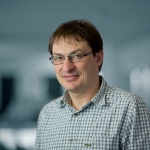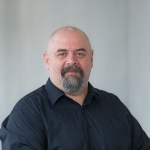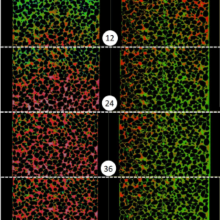New joint publication (University of Stuttgart/The University of Manchester, and Diamond Light Source, UK), published in the journal Science Advances. The paper has been developed in the framework of SFB 1313 and SimTech:
“Non-Uniqueness of Hydrodynamic Dispersion Revealed using Fast 4D Synchrotron X-ray Imaging”
Authors
- Yongqiang Chen (The University of Manchester)
- Holger Steeb (SFB 1313 research projects B05 and C05 / University of Stuttgart)
- Hamidreza Erfani (The University of Manchester)
- Nikolaos K. Karadimitriou (SFB 1313 research projects B05 and C05 / University of Stuttgart)
- Monika S. Walczak (The University of Manchester)
- Matthias Ruf (University of Stuttgart)
- Dongwon Lee (SFB 1313 research projects B05 / University of Stuttgart)
- Senyou An (Imperial College London)
- Sharul Hasan (The University of Manchester)
- Thomas Connolley (Diamond Lightsource)
- Nghia T. Vo (Diamond Light Source)
- Vahid Niasar (The University of Manchester)
About the publication
Research groups led by Prof. Holger Steeb from the University of Stuttgart and Dr. Vahid Niasar from the University of Manchester have produced the pore-scale experimental data to show that hydrodynamic dispersion significantly differs between the contamination and the clean-up process of a solute transport under unsaturated conditions. The corresponding dispersion coefficient is history dependent and is strongly affected by the flow rate. This study imposes a new question whether the existing continuum-scale theories for solute transport are valid for clean-up and contaminations processes. The corresponding results were reported in the renowned scientific journal Science Advances, and it is anticipated that this work is the pioneering one towards the establishment of a new theory which will accommodate the underlying physical processes.
Solute transport in porous materials is a fundamental physical process of relevance to many industrial and natural systems, with a vast socioeconomic interest. Experimental and field studies reported that the clean-up of contamination in aquifers takes a much longer time than the contamination process.
In order to investigate the physical reason behind this observation in the literature, researchers at the Institute of Mechanics (CE) (Prof. Holger Steeb) and at the University of Manchester, UK (Dr. Vahid Niasar) supported by the scientists at the Diamond Light Source Synchrotron Facilities in the UK, replicated the conditions of a contamination and clean-up process in a nature-like porous medium made of find sand grains, for a number of boundary flux conditions. A series of experiments took place under unsaturated conditions, and the corresponding images from the two processes were acquired with fast, synchrotron μ-XRCT imaging. After extensive image processing, the corresponding solute concentrations for both processes, as well as their rate of change, was estimated. The dispersion coefficient was calculated with respect to each process, and when plotted against the Péclet number, for the first time in the literature, its non-unique nature became obvious.
The two scientists aspire continuing their individual and collaborative work towards the establishment of a novel approach, by making use of the new findings, in order to improve our capability to estimate their time scale in geological and engineering systems, with vast scientific and socioeconomic implications.
A successful collaboration across universities/countries
The publication is the result of a very successful collaboration between scientists and engineers from different universities and research organizations. As part of the collaboration, the working groups led by Prof. Holger Steeb and Dr. Vahid Niasar contributed their complementary expertise in the fields of multi-phase flow and transport, microfluidics, s-μXRCT imaging, data management and image processing, among others. The impetus behind the collaboration was provided by several funding institutions in the (EPSRC, American Society of Chemistry, Diamond Light Source, SFB 1313 and EXC 2075). The results from this work will benefit both Cluster of Excellence “Data Integrated Simulation Sciences” (SimTech) and the Collaborative Research Center (SFB) 1313, at the University of Stuttgart.
Links
- SFB 1313 and SimTech publication: Non-Uniqueness of Hydrodynamic Dispersion Revealed using Fast 4D Synchrotron X-ray Imaging
- SFB 1313 research project B05 "Hydromechanics of fractures and fracture networks: A combined numerical multi-scale and experimental investigation"
- SFB 1313 research project C05 "Process-dependent porosity-permeability relations for fluid-solid reactions in porous media"
- SFB 1313 research project B05 "Hydromechanics of fractures and fracture networks: A combined numerical multi-scale and experimental investigation"
Contact

Holger Steeb
Prof. Dr.-Ing.Spokesman, Principal Investigator, Research Projects B05, C05, and Z02, Central Project Z

Nikolaos K. Karadimitriou
Dr.Principal Investigator, Project Z02 (PML)
[Photo: Max Kovalenko]


